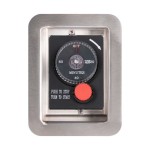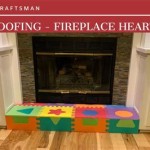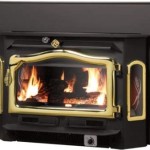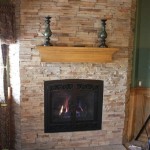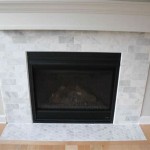```html
Contemporary Outdoor Fireplace Designs
Outdoor fireplaces have evolved from simple brick structures to sophisticated design elements that enhance the aesthetic appeal and functionality of outdoor living spaces. Contemporary outdoor fireplace designs emphasize clean lines, innovative materials, and a seamless integration with the surrounding landscape. They are not merely sources of heat but focal points for relaxation, entertainment, and creating a welcoming atmosphere.
The driving forces behind the evolution of contemporary outdoor fireplace design include advancements in materials science, a growing emphasis on sustainable practices, and a desire to extend the usability of outdoor spaces throughout the year. Homeowners are increasingly seeking personalized and bespoke designs that reflect their individual styles and architectural preferences. This article explores key aspects of contemporary outdoor fireplace designs, providing insights into materials, styles, and considerations for creating a stunning and functional outdoor feature.
Material Innovation and Selection
The materials used in contemporary outdoor fireplaces play a crucial role in their aesthetic and functional performance. Traditional materials like brick and stone remain popular, but they are often incorporated in new and innovative ways. Concrete, steel, and composite materials are gaining prominence, offering diverse design possibilities and enhanced durability.
Concrete is highly versatile, enabling the creation of sleek, minimalist designs. It can be cast into various shapes and textures, allowing for seamless integration with modern architectural styles. Concrete fireplaces can be stained or polished to achieve a range of finishes, from rough and rustic to smooth and refined. The use of colored concrete can also add a touch of personality and complement the surrounding landscape.
Steel provides a contemporary and industrial aesthetic. Weathering steel, also known as Corten steel, is particularly popular for outdoor fireplaces due to its rust-like appearance which provides a natural, aged look over time. This material is corrosion-resistant, making it suitable for a variety of climates. Stainless steel is another option, offering a clean and modern look that is easy to maintain.
Stone, whether natural or manufactured, is a timeless choice for outdoor fireplaces. Natural stone options include granite, limestone, and slate. These materials offer unique textures and colors, creating a sense of authenticity and connection with nature. Manufactured stone offers a more consistent appearance and can be a cost-effective alternative. The choice of stone depends on the desired aesthetic, budget, and the overall design of the outdoor space.
Composite materials are engineered to withstand harsh weather conditions and require minimal maintenance. These materials can mimic the look of wood or stone, providing a durable and aesthetically pleasing alternative. Composites are also often lighter than traditional materials, making them easier to install and potentially reducing the structural requirements of the fireplace.
Beyond the visual and structural properties, material selection also considers the fireplace's fuel source. Wood-burning fireplaces require materials that can withstand high temperatures, such as firebrick or refractory concrete. Gas fireplaces can use a wider range of materials, as the heat is generally less intense. Understanding the compatibility of materials with the chosen fuel source is essential for ensuring the safety and longevity of the fireplace.
Design Styles and Integration
Contemporary outdoor fireplace designs encompass a wide range of styles, from minimalist and modern to rustic and eclectic. The key is to integrate the fireplace seamlessly with the surrounding landscape and architectural style of the home. Considerations include the size and shape of the fireplace, its placement within the outdoor space, and the surrounding elements, such as seating areas, landscaping, and lighting.
Minimalist designs emphasize clean lines, simple shapes, and a focus on functionality. These fireplaces often feature concrete or steel construction with a neutral color palette. Minimalist fireplaces blend seamlessly into modern landscapes, creating a sense of calm and sophistication. They are often integrated into retaining walls or used as a focal point in a seating area.
Modern designs incorporate bold geometric forms, innovative materials, and a focus on creating a visually striking feature. These fireplaces may feature cantilevered elements, integrated lighting, or unique textures. Modern designs often incorporate contrasting materials, such as steel and wood, to create visual interest. They are well-suited for contemporary homes and landscapes with clean, defined lines.
Rustic designs emphasize natural materials, textures, and a sense of connection with the outdoors. These fireplaces often feature stone construction with irregular shapes and rough textures. Rustic designs may incorporate reclaimed wood or other natural elements to enhance their organic appeal. They are well-suited for homes and landscapes with a more traditional or natural aesthetic.
Eclectic designs combine elements from different styles, creating a unique and personalized look. These fireplaces may feature a mix of materials, textures, and colors. Eclectic designs allow for creative expression and can be tailored to reflect the individual tastes of the homeowner. They are well-suited for homes and landscapes with a diverse range of architectural styles and influences.
The integration of the fireplace with the surrounding landscape is crucial for achieving a cohesive and harmonious design. Consider the existing vegetation, topography, and architectural features of the outdoor space. The fireplace should complement these elements, creating a sense of balance and visual appeal. The placement of the fireplace should also consider the prevailing wind direction and the need for privacy.
Functionality and Features
Contemporary outdoor fireplaces are not just aesthetic features; they are also functional elements that enhance the usability of outdoor spaces. Features such as seating areas, cooking surfaces, and integrated storage can transform a simple fireplace into a versatile and enjoyable outdoor amenity.
Seating areas are a natural complement to outdoor fireplaces. Incorporating built-in benches, lounge chairs, or a fire pit surround can create a comfortable and inviting space for relaxation and entertaining. The seating area should be positioned to maximize the warmth and ambiance of the fireplace while also providing comfortable seating for guests.
Cooking surfaces can transform an outdoor fireplace into a functional outdoor kitchen. Adding a grill, pizza oven, or smoker can expand the culinary possibilities of the outdoor space. The cooking surface should be positioned at a comfortable height and integrated seamlessly into the design of the fireplace. Adequate ventilation is essential for ensuring the safety and comfort of the cooking area.
Integrated storage can help keep the outdoor space organized and clutter-free. Adding storage for firewood, grilling tools, or outdoor cushions can enhance the functionality and convenience of the fireplace area. The storage should be designed to blend seamlessly into the fireplace structure and complement the overall aesthetic of the outdoor space.
Lighting plays a crucial role in enhancing the ambiance and functionality of the outdoor fireplace. Incorporating lighting into the fireplace structure or surrounding landscape can create a warm and inviting atmosphere. Options include recessed lighting, spotlights, path lighting, and string lights. The lighting should be positioned to illuminate the seating area, cooking surface, and other key features of the outdoor space.
Water features can also be integrated with outdoor fireplaces to create a stunning and tranquil outdoor environment. The sound of flowing water can complement the warmth and ambiance of the fireplace, creating a relaxing and inviting atmosphere. Water features can be incorporated as part of the fireplace structure or as a separate element in the surrounding landscape.
Additionally, many contemporary outdoor fireplaces offer smart home integration. This might include remote control operation, automatic ignition systems, and even integration with home automation systems for controlling lighting and sound. These features add convenience and further enhance the overall user experience.
In conclusion, contemporary outdoor fireplace designs are characterized by their innovative use of materials, diverse design styles, and focus on functionality. By carefully considering these factors, homeowners can create a stunning and functional outdoor feature that enhances the aesthetic appeal and usability of their outdoor living spaces.
```
25 Outdoor Fireplace Ideas Fireplaces Fire Pits

Outdoor Fireplace Designs 10 Fabulous Examples In 2024 Guide

The Best Outdoor Fireplace Designs

Modern Outdoor Fireplace 25 Ideas Homerun Blog

9 Outdoor Fireplace Design Ideas The Family Handyman

Outdoor Fireplace Ideas The Home Depot

12 Outdoor Fireplace Ideas

The Chicest Outdoor Fireplace Ideas To Steal For Your Backyard Designs Rooms Beautiful Spaces

30 Outdoor Fireplace Ideas Cozy Fireplaces

25 Outdoor Fireplace Ideas Fireplaces Fire Pits

